SUMMARY
This is AI generated summarization, which may have errors. For context, always refer to the full article.
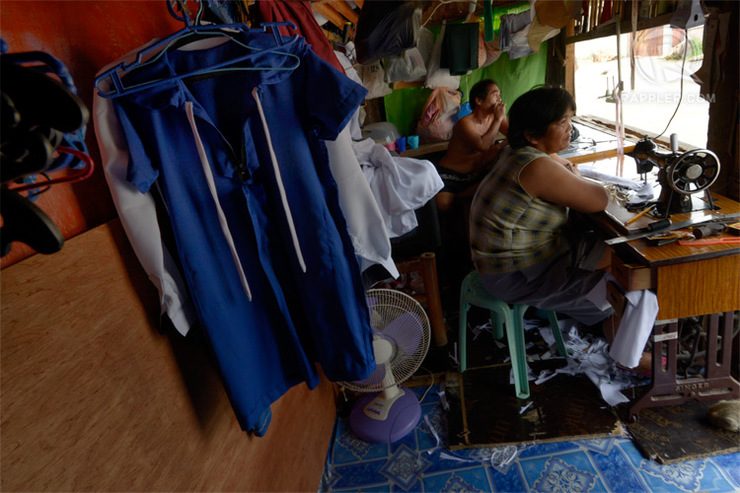
ZAMBOANGA CITY, Philippines — They were both teenagers when they got married. Both were tailors in a sweat shop somewhere in Central Mindanao. About to start a family, they moved west to find a better life. After several years as dressmakers for a wholesaler, the couple decided to venture on their own.
With enough savings, they opened a small shop in the poor community of Lustre, Barangay Sta Catalina. They started out doing repairs and alterations using one simple sewing machine. With their perseverance, the couple’s start-up business grew. They were able to purchase 9 high-speed sewing machines and were making school and office uniforms for the community.
But fate was not always good. On September 9, 2013, hundreds of armed Moro National Liberation Front rebels stormed their community. When the MNLF started engaging in a gunfight with the police and military, the family ran for safety. They fled their burning house; their investment.
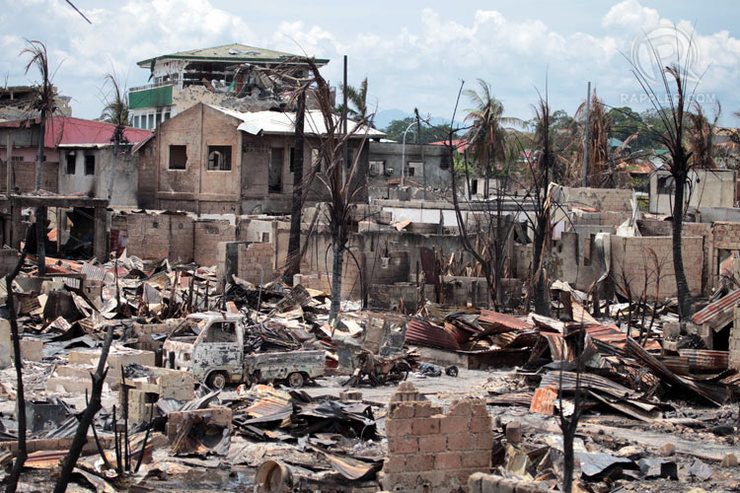
“Pagkatapos ng gera bumalik ako dito sa Lustre para tingnan kung may natira pa sa bahay namin pero abo na ang naabutan ko. Pati mga bakal ng makina hindi ko na nakita pa,” said Wilfredo Punzalan, 53, who started sewing at the age of 12 in South Cotabato. The skills he developed helped him get through high school.
(After the siege, I returned to Lustre to see what was left of our house but it was reduced to ashes. I didn’t even see any steel left from our machines.)
Wilfredo added that life is hard inside the Joaquin F. Enriquez Sports Complex. “Sa sobrang dami namin doon sa grandstand, ubos ang oras mo sa pagpila pa lang para sa pagkain. Wala ka nang oras para makapaghanap pa ng trabaho o pagkakakitaan.”
(Because of the sheer number of people at the grandstand, you would spend all your time lining up for food. You won’t have time to look for a job or livelihood.)
To help her husband and 3 of their children, Elsie, 52, got involved in the food-for-work program being offered to evacuees by aid organzations. By keeping the JFE Sports Complex trash-free, she was able to get a sack of rice and money for their needs, instead of struggling in line with fellow evacuees.
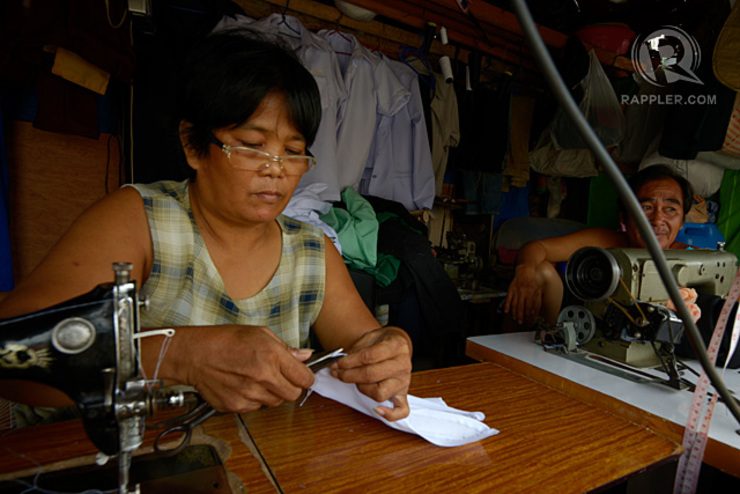
“Noong November namigay ang Department of Trade and Industry ng mga makina para pangkabuhayan. Masuwerte naman at nabigyan kami (In November, the Department of Trade and Industry gave away machines for livelihood. We’re lucky to get one),” Elsie said. From there, the family started to pack their things and returned to Lustre. But it wasn’t easy to start anew.
Upon their return, the family was prohibited from erecting any structure in the lot where they started their business 34 years ago. Determined, Wilfredo started to squat along the sidewalk across their former shop.
“Ayaw na namin bumalik talaga sa grandstand kasi, unang-una, malayo sa eskwelahan ng mga bata ang transitory site na inaalok sa amin ng city hall. Baka maubos lang sa pamasahe ang naipon namin. Paano pa kami makakapag-simula ulit?” The couple asks.
(We don’t want to return to the grandstand because first of all, the transitory site being offered by city hall is far from our kids’ school. We might spend all our savings on transportation expenses. How can we re-start [our business]?)
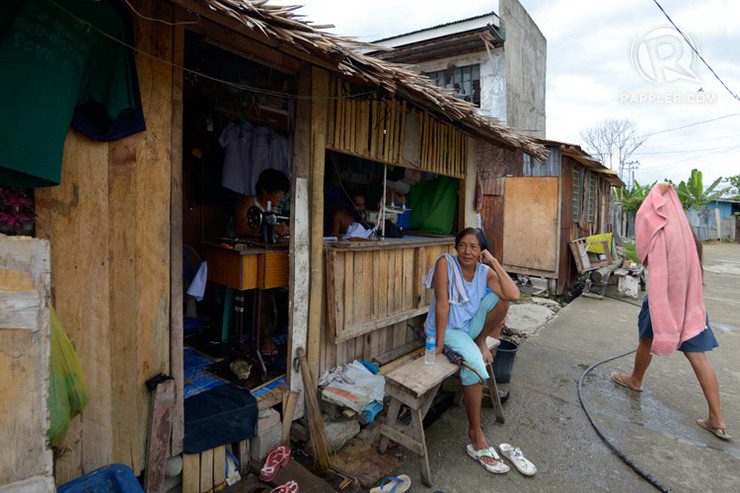
“Hindi namin alam noon kung paano magsisimula ulit pero nagbalikan ang mga dati naming suki. Dahil wala kaming puhunan, sila na ang nagdadala ng sinulid, butones at kung anu-ano pa.” Elsie said and adds “naghahalinlinan lang kami sa makina para lang makatapos kaagad dahil madami talagang nagpapagawa.”
(We didn’t know how to start, but our regular customers began to come back. Because we don’t have any start-up fund, they brought their own thread, buttoms and other materials. We take turns using the machine to keep up with the orders.)
Months later, one of Elsie’s friend from Maasin found out about their predicament and loaned them a high-speed sewing machine. Come summer, and in time for the school opening, Wilfredo was also able to get an edger on loan.
“Kung wala kasi ang mga iyan hindi namin kakayanin gumawa ng mga school uniforms ng paspasan kasi hindi din naman kaya ng ordinaryong makina na gumawa ng pulido at maramihan ng agaran.” Wilfredo said.
(If we didn’t have those equipment, we cannot make school uniforms as fast as we would like. Ordinary machines cannot produce well-made uniforms in volume.)
Perseverance, according to them is the reason behind their recovery. When asked if they still need government support, they said they really need it badly but if seems that the government is not doing enough, especially for those who were directly affected by the siege.
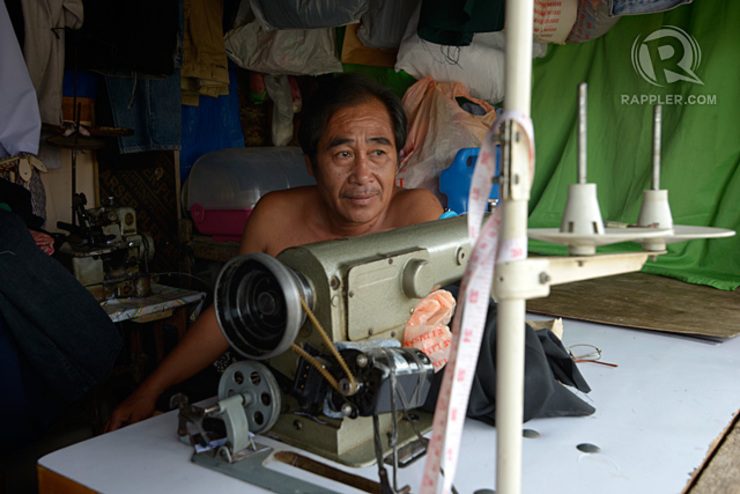
“Nakakasama lang ng loob kasi dahil yung mga fire victims hindi nabigyan ng prayoridad. Isang taon na, wala pa din yung mga construction materials na pinangako sa amin. Tapos kapag wala ka sa evacuation center hindi ka na makakatanggap ng food packs. Buti pa ang mga nasa grandstand kahit hindi nasunugan, na-hostage o namatayan nakakatanggap ng ayuda,” the couple said.
(It’s disappointing because the fire victims were not given priority. It has been a year, and we haven’t received the contruction materials that were promised to us. Then if you’re not in the evacuation center, you can’t get food packs. Those at the grandstand are better off than the fire victims, the hostages, or those who lost family members. At least they get help.)
Wilfredo said: “Nasa tao lang naman ‘yan. Kung parati kang aasa sa bigay tapos wala din naman nabibigay, hindi ka pa rin makakaahon. Siyempre kailangan mo din tulungan ang sarili mo.”
(It’s all up to the individual. If you keep on depending on help, and you don’t get any help anyway, you still can’t recover. Of course, you have to help yourself.)
Wilfredo was referring to some of their neighbors who also lost their homes and livelihood but continue to rely on dole-outs from aid organizations and the government which, according to them, have ceased assisting those who have left the evacuation centers.
The couple admitted that life nowadays is still hard despite the fact that they are now at least earning. “Dati pa-easy easy lang kami – nakakakain kahit na anong gustong kainin pero ngayon kailangan mag-budget muna para makaipon at makabili na din ng sarili naming makina.”
(We used to have it easy – we can eat whatever we want. But now, we have to budget our money so that we can save enough to buy our own machines.)
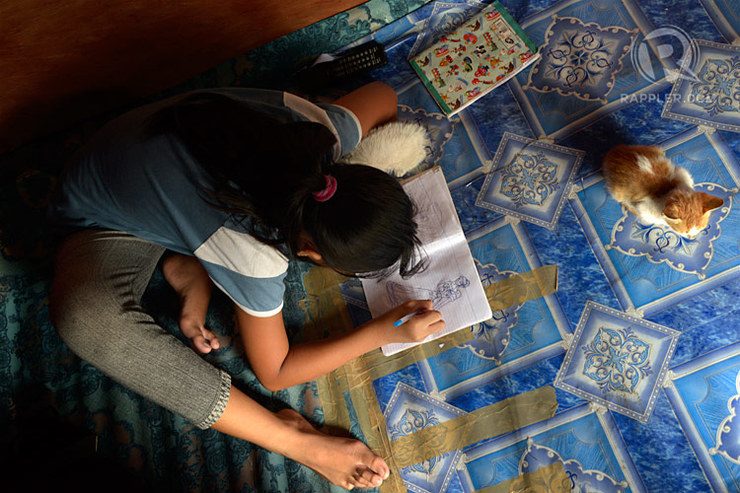
Elsie added, “Wala din naman pera masyado ang mga customer namin kaya kadalasan utang din muna ang bayad sa amin (Our customers don’t have that much money, so most of the time, we don’t get paid right away).”
It has been a full year since they lost everything from an unwanted war and the Punzalan’s lives have come into full circle. – Rappler.com
Add a comment
How does this make you feel?
There are no comments yet. Add your comment to start the conversation.